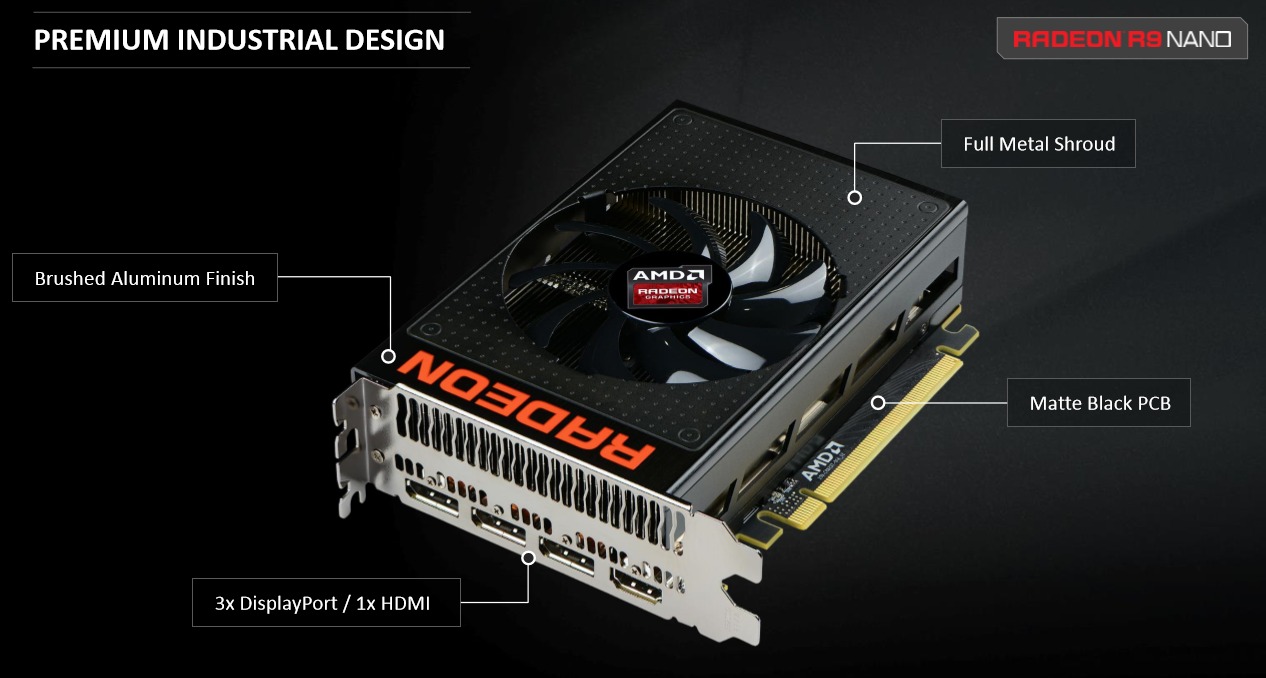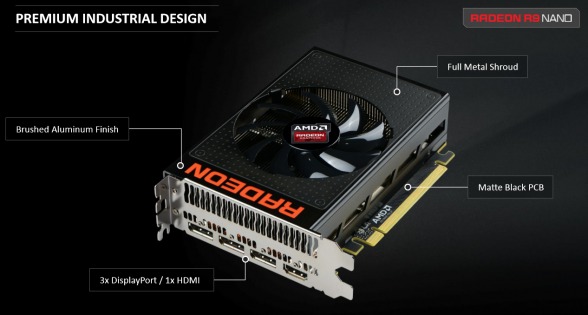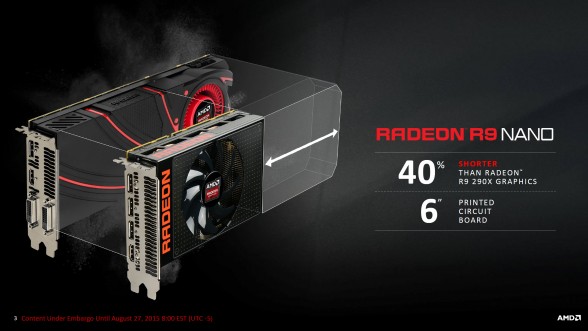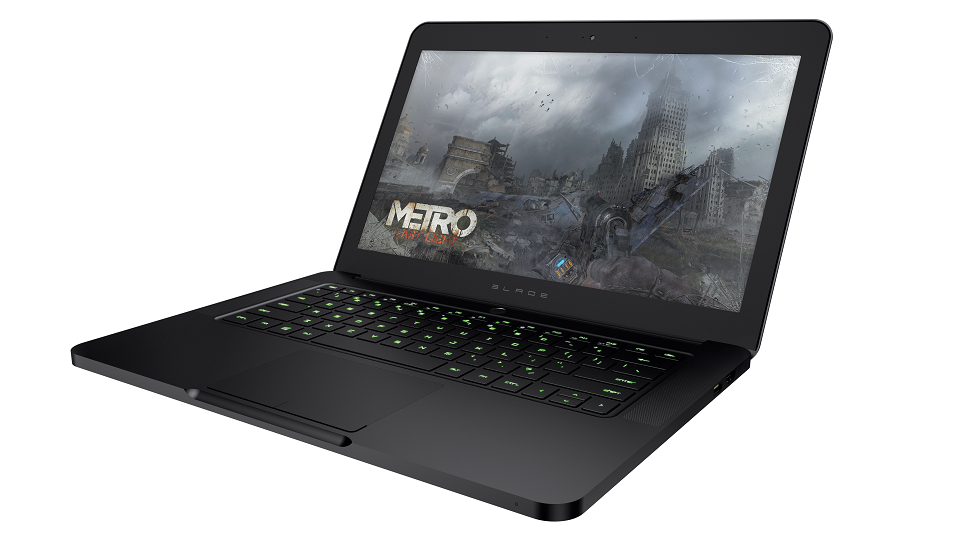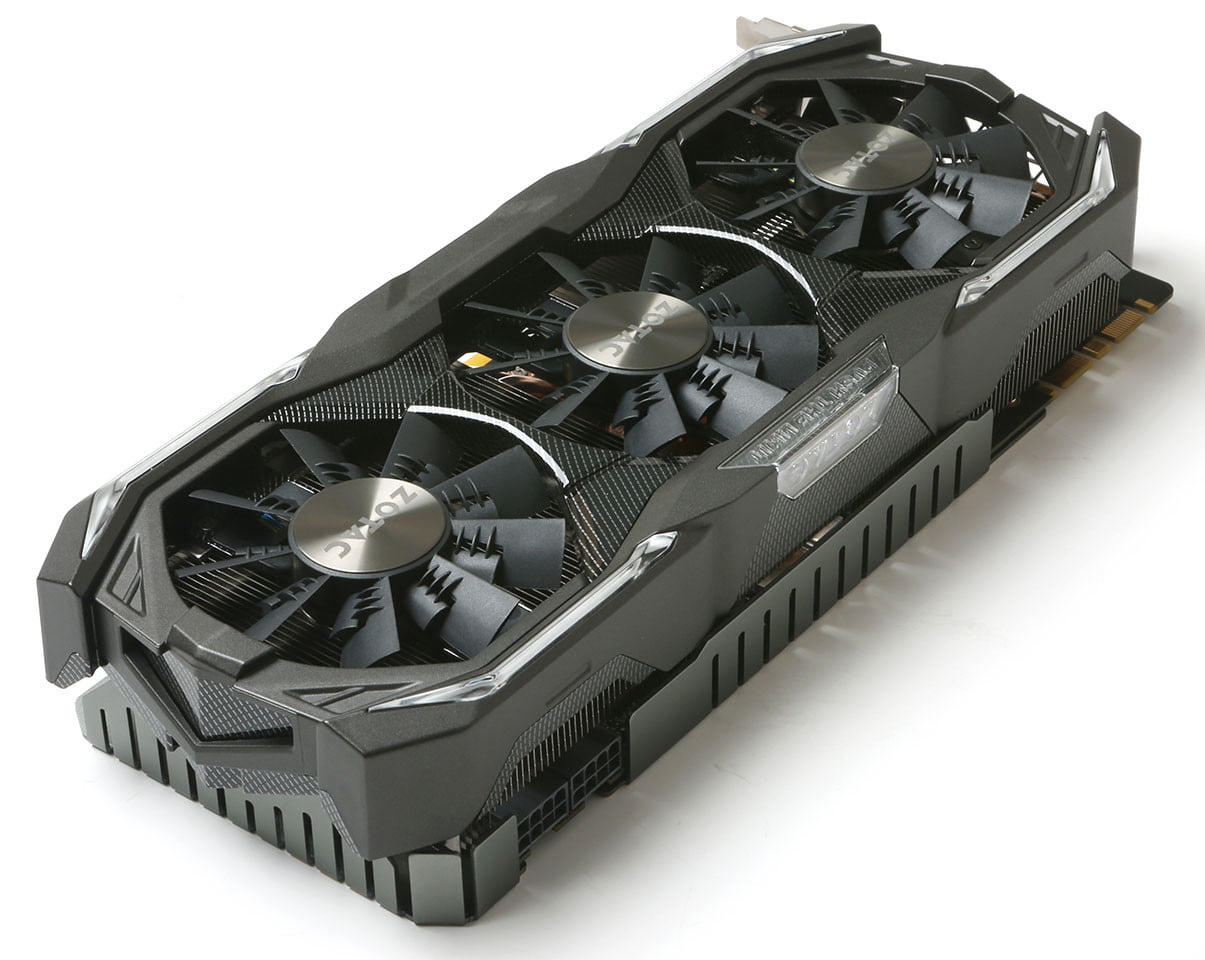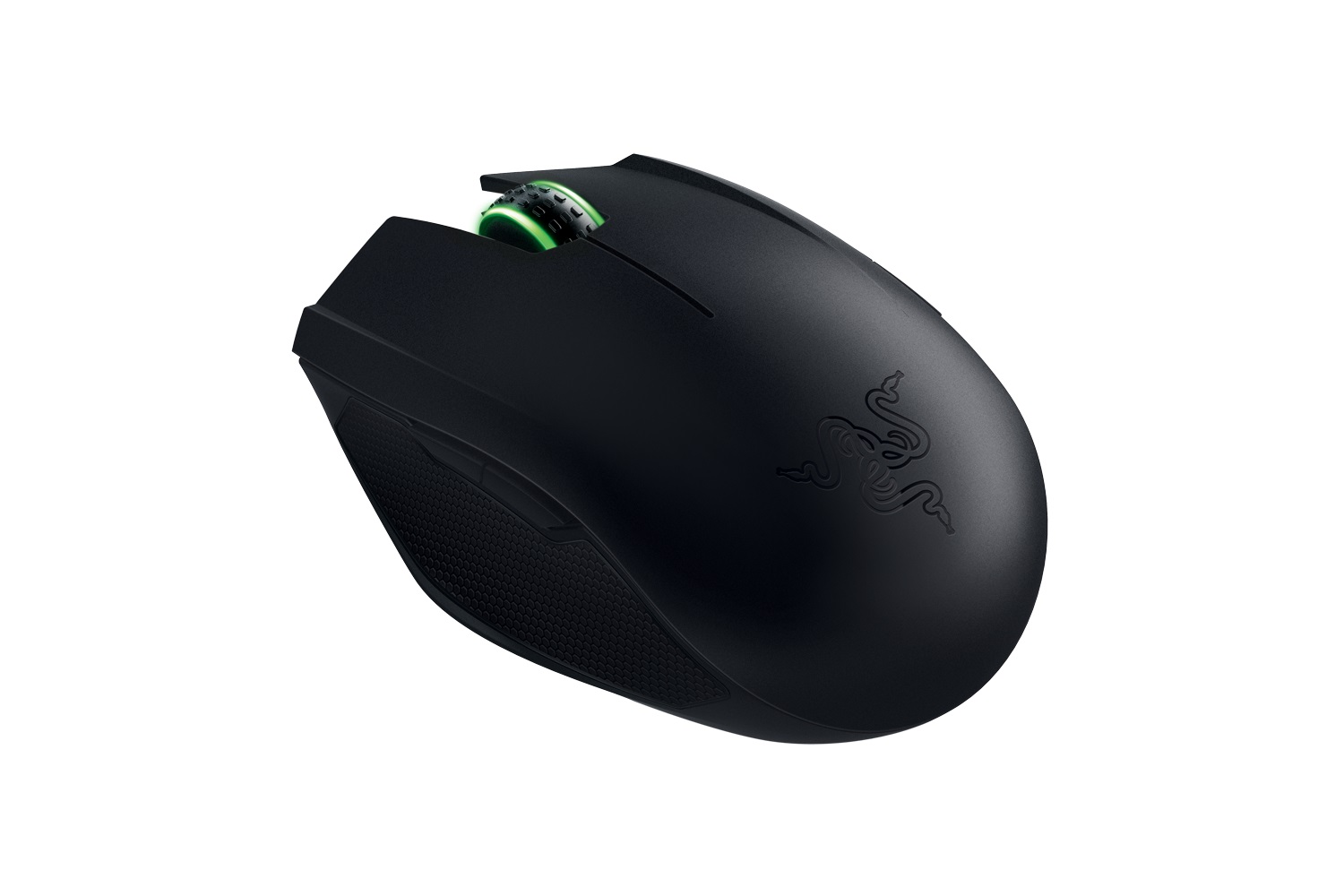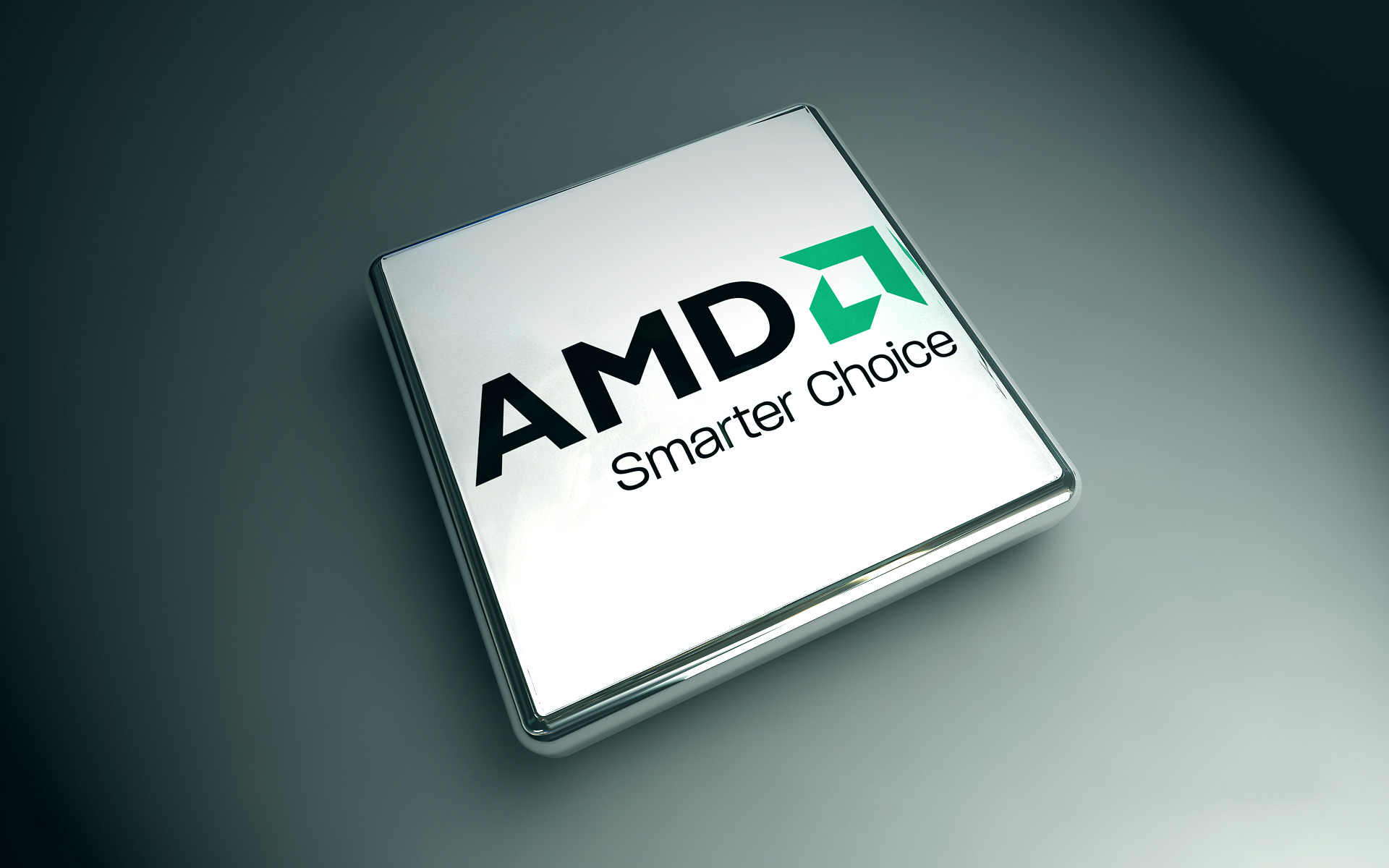AMD has officially announced the Radeon R9 Nano, which is the latest — and possibly final — release to be based on their high-end desktop Fiji GPU with High-bandwidth memory (HBM). The Radeon R9 Nano will be available for purchase starting September 10th, and will be priced at $649, which matches that of the R9 Fury X.
Measuring only six inches, the R9 Nano is targeted towards the small form-factor and mini-ITX markets. The incredibly small form-factor of the R9 Nano is achieved with the aforementioned High-Bandwidth Memory. Compared to traditional planar GDDR5, HBM uses stacked memory that’s more power power efficient and has significantly reduced footprint. The stacks of memory are also placed closer to the GPU and linked together through an interposer to shorten the data exchange distance between the GPU and memory.
Despite having a tiny body, the R9 Nano carries a fully-enabled Fiji GPU found in AMD’s current flagship card, the Radeon R9 Fury X. Additionally, the GPU is rated to run at up to 1GHz; an impressive pace given its heat output and smaller cooling solution. With that said, because its heatsink is shorter and its TDP being a mere 175W (100W less than the R9 Fury), it’s unlikely that the R9 Nano will stay running at 1GHz due to thermal throttling. While benchmarks are currently unavailable until the card’s formal release, AMD has given us some projections to base off of:
The Radeon R9 Nano will be up to 30% faster than the R9 290x, as well as being 40% smaller and running 20% cooler. It will feature 4GB of HBM with a 4096-bit wide memory bus just like the R9 Fury and Fury X. But unlike its bigger (and warmer) cousins, the R9 Nano needs just 1x 8pin PCI-e power connector. While this is a blessing for those who skimped out on a lesser power supply, it does raise some questions regarding its over-clocking capabilities. In fact, it has been reported that the R9 Nano will not come with the ability to overclock it’s memory speed, which might irk some enthusiasts. Still, odds are if you’re looking for overclocking, you’ll probably not be needing such a small form-factor, and in that case you can look to the Fury or Fury X. 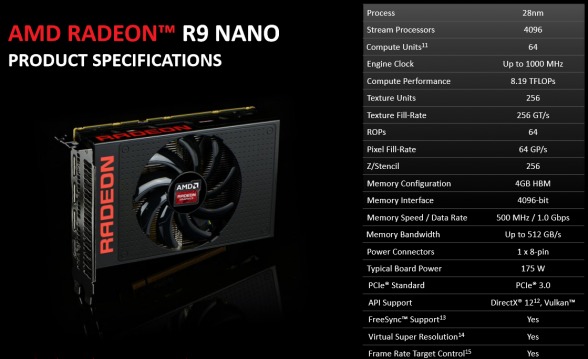
While The R9 Nano doesn’t promise the best overall price to performance ratio, it does promise to be the highest performing card in the small form-factor market, which should certainly allow for some very interesting SFF builds. It would also be very interesting to see some non-reference cooler designs for the R9 Nano, which AMD has said will be coming in Q4 of this year.
At the time writing, the most powerful option anywhere near this size are the various ITX variants of the GTX 970 available from ASUS and Gigabyte, and AMD’s most powerful SFF solution is the R9 380 iTX from Sapphire. So, it’s clear that the R9 Nano will be the performance winner in this market by a long shot, and will command a price premium for it.

